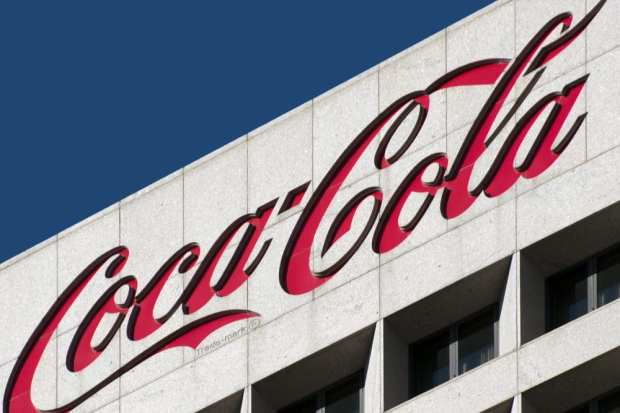Increasing D2C Sales Keep Coca-Cola’s Earnings From Going Fully Flat

With restaurant attendance down, movie theaters mostly closed and consumer enthusiasm for events outside their living rooms at a historic low point, Coca-Cola once again reported depressed revenue with its Q3 earnings. But an uptick in direct-to-consumer (D2C) sales for home use counteracted some of the pain, and in combination with some gradual signs of improvement in sales at convenience stores and restaurants, that pushed Coke to a better-than-forecast quarterly performance.
“Throughout this year’s crisis, our system has remained focused on its beverages for life strategy,” CEO James Quincey noted in releasing the results on Thursday (Oct. 22). “We are accelerating our transformation that was already underway, shaping our company to recover faster than the broader economic recovery. While many challenges still lie ahead, our progress in the quarter gives me confidence we are on the right path.”
A right path that, given last quarter, is undeniably a challenge to keep track of. All of Coke’s major drink categories — sparkling soft drinks, juices, water/sports drinks and coffee/tea products — suffered. Sparkling soft drinks was the least affected category, with its volume falling only 1 percent, driven primarily by the decline in the North American fountain-drinks business.
Juice and plant-based drinks saw volumes shrink by 6 percent, while water, enhanced water and sports drinks fell by 11 percent. The hardest hit segment over all was tea and coffee, which dropped 15 percent. That’s largely an outgrowth of the closure of the company’s Costa cafes, which the firm predicted are unlikely to make a full recovery any time soon.
Coke’s woes this quarter, as executives repeatedly highlighted in their comments to investors, are due to the fact that consumers aren’t doing much outside their homes these days. That means they aren’t purchasing Coke products while they’re out, as they’re not actually out.
Away-from-home volumes have been “improving” — down only in the mid-teens in percentage terms in Q3 as opposed to the 50 percent plummet Coke was reporting at the height of the shutdown period. But they still remain depressed.
Some of the work of balancing out that loss, Coke noted, has been a sharp pick-up in D2C demand for the company’s products. CEO Quincey noted the company had specifically seen strength in its grocery and eCommerce channels, as both are benefiting both from shifts in consumer behavior and “our system’s actions to capture those opportunities,” he said.
“So we’re focused on winning share in the channels that are open and so we have been winning share in the at-home channels. And that is true across the board. That’s true across many, many, many of the countries. It’s very rare to win in every country all the time, but we have been winning broadly across the world in the at-home channel,” Quincey noted.
But that pick-up hasn’t offset other losses as neatly as it has done for PepsiCo. Pepsi reported 3 percent sales growth in its North American beverage unit in Q3.
Coca-Cola CEO Quincey tried to explain away the difference on CNBC, saying: “We have been winning share in at-home channels, and that’s going to set us up for emerging stronger and being in a stronger position, even though mechanically in the short term, we lose share.”
As for what comes next, Coke has confirmed that it will continue its efforts to prune some offerings, eliminating its underselling Tab product and Odwalla juice line. “The pandemic helped us realize we could be bolder in our efforts,” Quincey noted in his call with analysts.
But beyond that, Coke didn’t have much in the way of specific predictions, citing the continued uncertainty of the pandemic period.
As for the Q3 hard results, Coke’s revenues came in at $8.65 billion for the quarter. That’s notably better than the $8.36 billion analysts had expected, but still a 9 percent year-on-year decline from this time in 2019.
Earnings came in at 55 cents per share, topping the 46 cents per share analysts had expected but down from 60 cents per share at this time in 2019.
